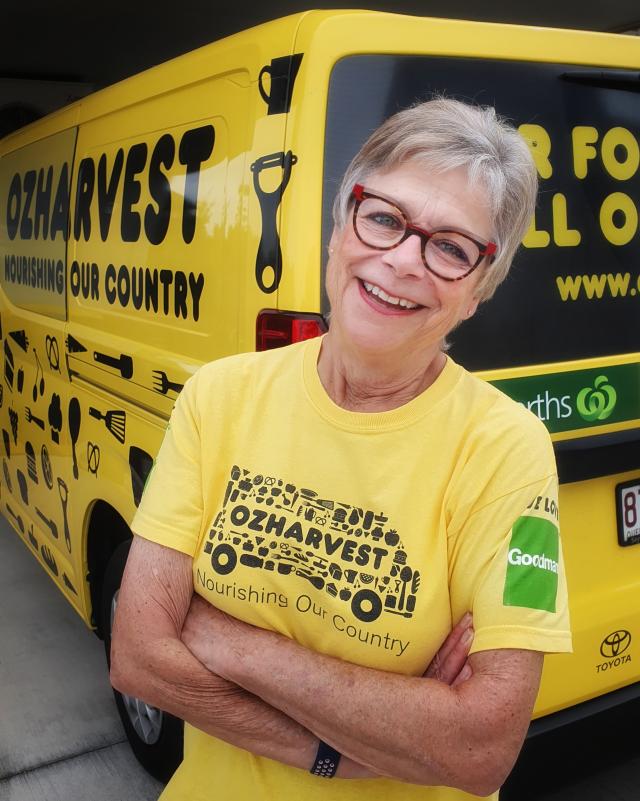Food waste is an enormous worldwide environmental issue from emitted greenhouse gases to the resources wasted in creating that food.
In Australia we waste 7.6 million tonnes of food a year and the situation is getting worse, OzHarvest Sunshine Coast and Gympie founder Michele Lipner told guests at Noosa Parks Association Friday forum last week.
Despite this shocking wastage of food, a 2022 Foodbank report showed 0.5 million households were living with food insecurity each day and 53 per cent of those were working households.
These people are not the homeless living on the streets. These are our neighbours, friends, families who have jobs, single women over 50, Michele said.
In Queensland 440,000 households went hungry on any day and 230,000 are seeking food from services every day.
In the past six months the demand for services has increased more than 60 per cent and 33 per cent of charities can not meet the demand for food relief, she said.
Covid, cost of living increases, rent and interest increases, natural disasters and climate change have all impacted people’s lives.
In 2004 former Sydney event organiser Ronnie Kahn noticed the amount of food waste and started with one van collecting good food that would otherwise go to landfill and distributing it to charities.
Since then OzHarvest, the organisation she founded, has expanded to every capital city and many regional areas and delivered 225 million meals to people who would have gone hungry.
In 2014 former international aid worker Michele Lipner with two volunteers began at Peregian Beach, collecting food from the Bent Banana fruit and veggie store, which no longer operates, and delivering it to Youturn youth support.
OzHarvest Sunshine Coast now has more than 100 volunteers, collects 15,000kg of food a month from 35 food donors and delivers it to 47 charities from Gympie to Caloundra and across the hinterland. It operates from a warehouse at Coolum and obtains funding from grants, donations and fundraising.
“The problem is huge,“ she said. “We pick up surplus quality food that would otherwise go to waste and deliver it at no cost. We are the safety net between waste and delivery to people going hungry.“
In addition to food rescue the Sunshine Coast OzHarvest operates educational programs to reduce food waste and create nutritional meals on a budget to local schools. They also run Cooking for a Cause corporate events involving groups cooking a meal which is then distributed to a charity.
Their latest venture in partnership with University of Sunshine Coast is the creation of an A-Z Guide to Cooking with local food, called SunnyCoast Eats.
A thousand copies have been donated to local charities to help people create nutritious meals and another thousand sold, with each copy sold funding the donation of a book to an OzHarvest recipient.
“Why do we waste food?“ Michele asked the audience.
The answer is shocking. Most of it is cosmetic. People don’t want to buy food unless it’s perfect.
Michele said a third of food waste occurs on farms and a third from people’s homes. “Seventy per cent of food in the bin doesn’t need to be there,“ she said.
“Forty to 60 per cent of food produced on the farm never leaves because it’s not saleable. It doesn’t meet standards and that’s almost solely cosmetic.“
Some examples locally involved OzHarvet collecting white turnips from a local shop that only wanted to display blush turnips, picking up 100kg of cucumbers from a farm because they were too small or too large and collecting 400-500kg eggs per month from a producer because they were too small or too large.
The impact on the environment is substantial with 20 per cent of landfill consisting of food waste, and it produces methane gas as it breaks down.
“If food waste was a country it’d be the third largest producer of emissions after China and the US,“ Michele said.
“But there is hope,“ she said, with a Use it up campaign, launched in response to a Monash University study, aimed at reducing national food waste by 50 per cent by 2030.
And the solution is simple.
“Use what you have in the refrigerator. Buy what you need, eat what you buy, know how to store it, buy local,“ Michele said.
Farmers’ market food may be expensive but it’s fresh, local and will last longer.
“There are multiple ways to make a difference. We are the solution collectively,“ she said.
OzHarvest Sunshine Coast needs volunteers. To help or to purchase a SunnyCoast Eats book, visit ozharvest.org









